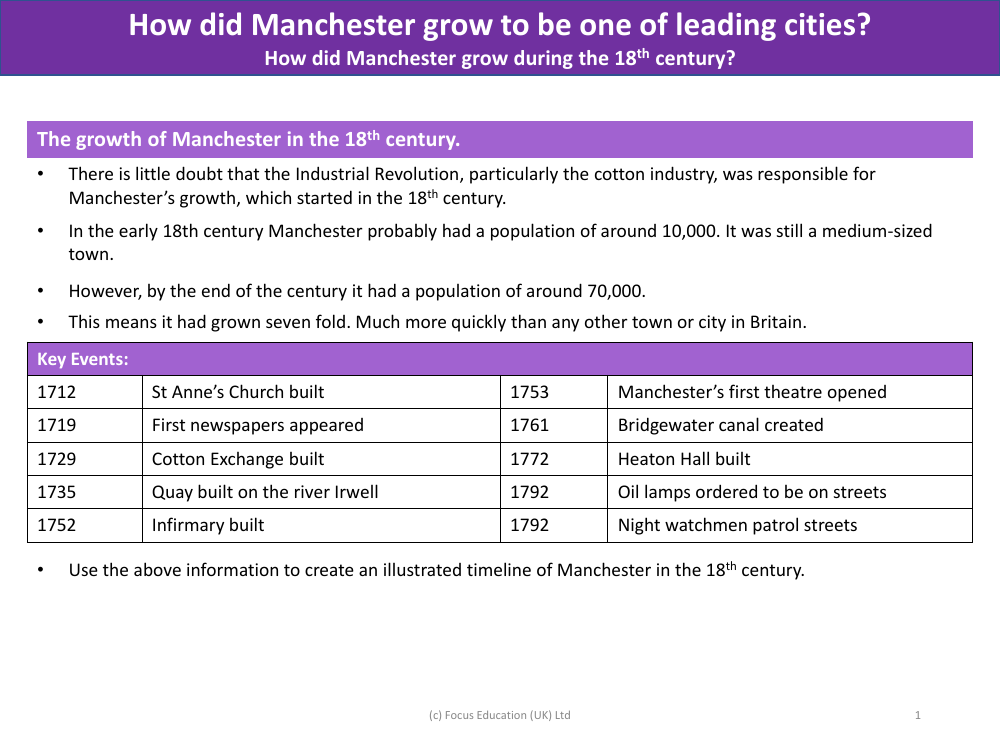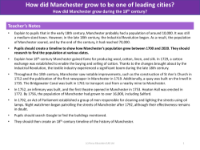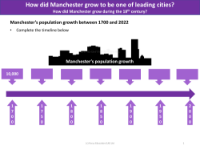Growth of Manchester in the 18th Century - Info sheet

History Resource Description
The 18th century marked a significant period of expansion for Manchester, primarily driven by the advent of the Industrial Revolution and the burgeoning cotton industry. At the century's commencement, Manchester was a moderately sized town with an estimated population of just 10,000 people. However, by the time the 18th century drew to a close, the population had surged to approximately 70,000 inhabitants. This rapid growth was unparalleled, as Manchester's population increased at a rate seven times faster than any other town or city in Britain during the same period.
Several key developments played a pivotal role in Manchester's transformation. The construction of St Anne's Church in 1712 and the opening of Manchester's first theatre in 1753 were significant cultural milestones. The emergence of the first newspapers in 1719 and the building of the Cotton Exchange a decade later in 1729 marked the city's burgeoning commercial importance. Infrastructure also improved, with the creation of the Bridgewater canal in 1761, the construction of Heaton Hall in 1772, and enhancements to public safety and amenities, such as the installation of oil lamps on the streets and the introduction of night watchmen in 1792. These events are crucial to understanding Manchester's growth and can be visually represented in an illustrated timeline, capturing the city's evolution into a leading urban centre during the 18th century.





